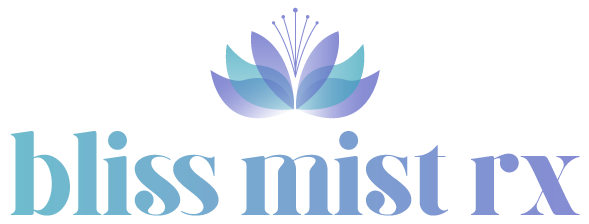
Exploring the Powerful Benefits of Ketamine Therapy
Share
Understanding Ketamine and how it can benefit patients struggling with mental health issues. How is ketamine different from traditional medicine and SSRI's
Why Ketamine Therapy over Traditional Therapy-
How does ketamine therapy compare with more conventional treatments for depression and anxiety? Conventional treatments include SSRIs (selective serotonin re-uptake inhibitors), and though effective, may sometimes come with sexual dysfunction, weight gain, and emotional blunting as part of their baggage. In such cases, ketamine treatment may be another option for patients who have struggled with conventionally used SSRIs.
What's different with ketamine therapy?
It is also noted that ketamine therapy provides another route of treatment for symptoms of depression and anxiety without the same side effects seen in more traditional antidepressant medications, such as SSRIs, which may induce sexual dysfunction, weight gain, and emotional numbing. For those who have problems with SSRIs, ketamine therapy may be a viable option. Many patients report that they feel more relaxed and open to therapy during ketamine treatment, making the progress they make in their treatment much deeper and more meaningful than symptom management. Clinical studies indicate that neuroplasticity, or the growth of new synaptic connections, accounts for the improvement in mental health following the use of ketamine. What this means is that the source of psychological pain can be addressed rather than just its symptoms being treated.
Why Low-Dose (Psycholytic) Ketamine?
You may know ketamine in the context of psychedelics, and yes, it is indeed psychedelic at higher doses. Most at-home ketamine treatment programs, however, is based on very low doses that have unique and very important advantages over the more extreme higher doses. These psycholytic doses are subanesthetic; that is, they do not result in the intense, dissociative experiences typical of higher doses. Instead, patients commonly report an immediate feeling of calm, ease, and clarity of mind. At these lower doses, individuals are relaxed and reflective, yet with heightened openness to therapy or self-care practices of both mind and body. This allows patients to process challenging emotions and triggers that may otherwise feel overwhelmingly prohibitive, thus being a very powerful complement to the therapeutic process.
Besides the general differences in mental state, there are a number of key advantages to our protocol of microdosing prescriptive ketamine:
- Psycholytic experiences are much less likely to be overwhelming or intense than a full psychedelic experience.
- These low doses are also less emotionally taxing, making regular use possible, which allows for maintaining a consistent level of the medicine in the brain and more stable, longer-term results.
- With higher psychedelic doses, patients are often not coherent to undergo therapies, meditation, and so on.
On the contrary, psycholytic doses enable the patient to participate more effectively in these activities due to a feeling of openness and calm, which could lead to deeper therapeutic and meditative results.
How does ketamine work in the brain?
The effects of ketamine on the brain are varied and complex, and indeed still under extensive study globally. It works through numerous mechanisms that are likely to have an interplay with one another. Two of the key neurotransmitters involved in the action of ketamine are Glutamate and GABA, the excitatory and inhibitory neurotransmitters of the brain, respectively.
Ketamine acts against the NMDA receptor, which is found in both GABA and Glutamate neurons. It is thought to inhibit GABA receptors more completely, thereby reducing their inhibiting action and, overall, increasing neural activity, especially in the prefrontal cortex. In addition, ketamine acts on another receptor, AMPA, which initiates a cascade of molecular events through proteins involved in enhanced neuroplasticity through the formation of new neural connections. These proteins include Brain-Derived Neurotropic Factor (BDNF), mTor, eEF2, and GSK-3.
Although we are still trying to understand the exact details of how ketamine works, we do know that it encourages neural pathway formation, which likely forms the bedrock for its antidepressant and anti-anxiety effects.
How does ketamine enhance neuroplasticity?
The main effects of ketamine are on the glutamate system, which is a critical method for how neurons talk to one another. Chronic stress or depression can lead to a shrinking and/or loss of neural connections; ketamine opens a window for neuroplasticity or, basically, your brain's capability to heal and form new neural connections. These new neural links promote enhanced mood, sleep, and overall mental well-being. Here is a useful metaphor: consider people coming into your house to a party. If the doors are obstructed, the people cannot enter; they crowd in the street. For this analogy, the people are glutamate and ketamine is the bouncer blocking the door so that the people cannot get inside. Since they can't go inside, glutamate will be concentrated on the street, here called your brain. Increased glutamate leads to bursts in neuronal activity.
These bursts of glutamate also encourage something very important: neuronal growth. Ketamine helps restore and strengthen neural connections through dendrites-small structures responsible for sending and receiving information between neurons.
Depression is also believed to partly result from broken neural connections. Ketamine increases levels of the neurotransmitter glutamate by blocking some receptors, which seems to promote repair in damaged dendrites and grow new neurons. This can, in turn, address a deeper origin of depression, therefore painting a clearer picture of how ketamine would support neuroplasticity and antidepressive properties.
If you or someone you know is struggling with depression and want to find out if ketamine treatment is right visit BlissMistrx.com

